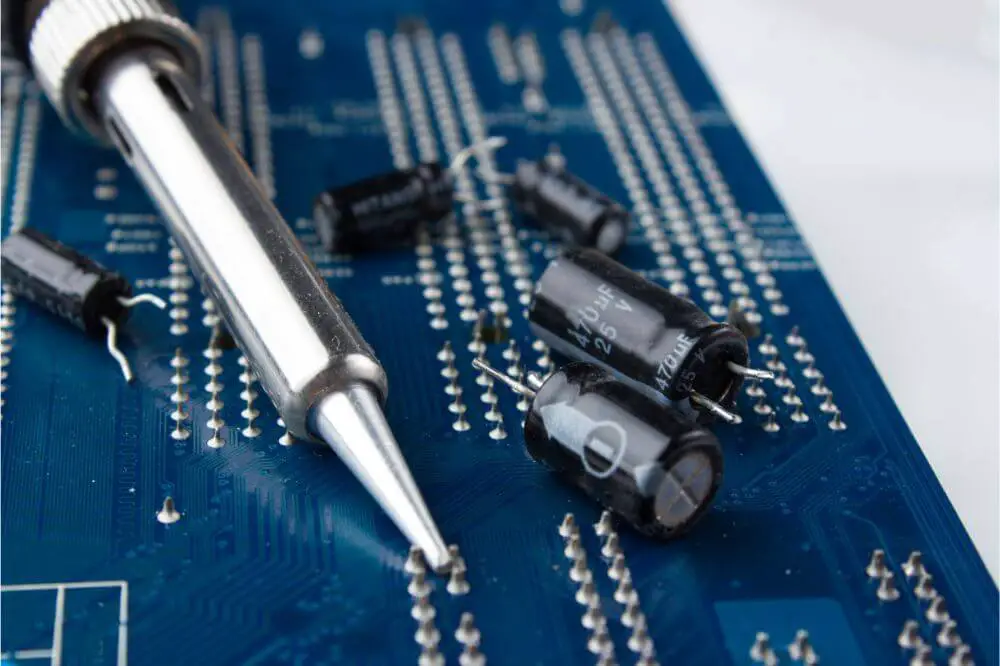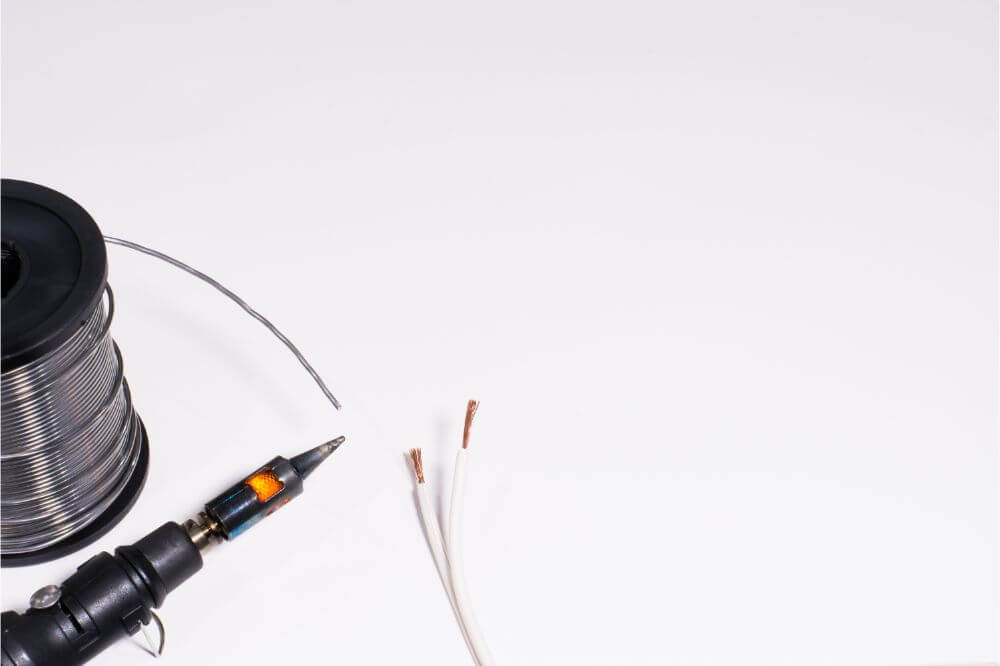The soldering iron is used in the joining of different kinds of metal by melting solder. While this solder is often known to be a combination of lead and tin, which metal is found at the soldering iron tip? If you’re curious to know the answer to this question, you’ve come to the right place.
In this article, you’ll be taken through the metals used to make the soldering iron tip. In addition to that, you’ll get to understand better the reason why the metal used is considered and not any other metal. Once you know this, you’ll be able to understand the functionality of the soldering iron better.
Composition Of The Soldering Iron Tip
The tip of the soldering iron is made from a solid copper core and comes plated with a layer of iron, nickel, and chrome. The copper in the soldering iron tip is used to guarantee the excellent transfer of heat.
On the other hand, the nickel plating acts as a non-wetting wetting, meaning it prevents the solder from wicking away from the working surface of the soldering tip. This means without this tip, the application of solder to the solder joint would be almost impossible. In addition to the nickel, chrome is added to add an extra protective layer.
Lastly, the iron found on the soldering iron tip plays a vital role in prolonging the tip’s life. Thus, it might seem obvious to have more iron on the tip to prolong its life, which is usually not recommended. The reason for this is that using more iron prevents the cracking or dewetting of the tip. This shortcoming of iron has seen many manufacturers try and find a more suitable alternative to no avail.
Some of the reasons why the search for an iron alternative have proved futile include:
The metal Shouldn’t Dissolve Molten Solder
Lead-free solders are usually a combination of silver, tin as well as an insignificant quantity of copper. Before using lead-free requirements, many commercial solders used some ternary or binary blends of lead and copper.
Nonetheless, the drawback with this option was that molten tin quickly dissolves many metals, including copper. Because of this, it necessitates the application of a protective layer that doesn’t dissolve tin quickly.
One of the few metals which can withstand the contact with molten tin for a prolonged duration is iron. Molybdenum also can withstand dissolution but isn’t used in place of iron.
The Metal Needs To Be Wettable
Iron usually wets when transferring molten solder to a joint, thereby promoting the transfer of heat. This is something that other metals considered, such as molybdenum, don’t, thereby making iron the only viable option.
The Metal Must Possess Excellent heat Transfer Properties
The soldering iron’s main purpose is transferring heat through its tip, thereby facilitating the transfer of the solder joint. Therefore, the metal used on the soldering iron tip must have superb heat transfer properties. While iron boasts good heat transfer properties, copper is a lot better hence why it’s preferred as the core.
The Metal Should Be Processable
There are several techniques in which iron can be applied to the copper substrate. The most common method that’s employed is electroplating.
The Metal Must Have Great Chemical/ Physical Properties
The metals used on the soldering iron tip also need to possess several suitable physical and chemical attributes. Some of these factors considered that make metal a preferred choice include melting point, ductility, and abrasion resistance. Whereas iron doesn’t possess an ideal mechanical attribute, it’s above average.

Types Of Soldering
Now that you know the metals found on the soldering iron, the next step should be identifying the different types of solders. Here’s an overview of the three different types:
- Soft soldering (90º C to 450º C) – This type of soldering has the lowest filler metal melting point compared to the others, which in some cases can be as low as about 400º C. These metals are usually alloys and contain lead that has liquid temperatures of less than 350ºC. These low temperatures found on this soft soldering typically cause the least stress to the parts thermally. With that said, it doesn’t create robust joints, hence making it unfitting for mechanical load-shouldering applications. This kind of soldering is also not great for high temperatures because it melts and loses its strength.
- Hard or silver soldering (>450 ºC) – During this soldering process, the metals used are silver or brass. For this process to be a success, you’ll need to have a blowtorch that can reach higher temperatures to melt solder.
- Brazing (>450º C) – For this type of soldering, the metals used usually have a much greater melting point than the ones used in both the soft and hard soldering. It has a common property to the hard soldering in that the metal that’s being bonded isn’t melted but instead heated. After both of these materials have been heated to desirable levels, you can go ahead and use the soldering metal as a bonding agent.
How Do You Clean The Metal On Your Soldering Iron?
The metal of your soldering iron wears out over time due to oxidation, excessive heating as well as contraction and expansion. Because of this, you need to make sure to maintain your soldering iron, and the best ways to do this is by:
- Ensuring to maintain optimal temperatures at all times, you’re using your soldering iron.
- Making sure to use solder that’s of exceptional quality as it doesn’t contain any impurities.
- Always cleaning the metal tip once you’re done using it.
- Making a point to tin the tips of your soldering iron.
- Using flux to form a protective layer to safeguard your metal from oxidation, which destroys it.
Conclusion
If you had no idea the type of metal was used on a soldering iron, reading through this in-depth article has offered you great insights. You now fully understand the metal components that are present in the tip of your soldering iron. With this in mind, it’s now easier for you to better understand how this useful tool functions when carrying out your daily duties.

